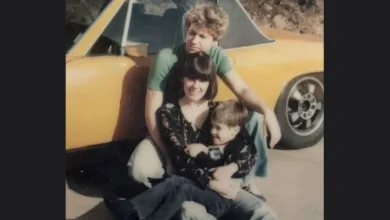#MyMadeInKE: Unveiling the Craftsmanship and Creativity of Kenya’s Artisans

Introduction
In the heart of East Africa, where the golden savannas meet bustling urban landscapes, a vibrant culture thrives. It’s a culture rooted in tradition yet constantly evolving, shaped by the hands of skilled artisans who pour their souls into every piece they create. Welcome to the world of #mymadeinke, where the essence of Kenya is captured in the artistry and craftsmanship of its people. This is more than just a hashtag; it’s a movement that celebrates the beauty of handmade goods, the stories behind them, and the communities they empower.
In this article, we’ll dive deep into the world of Kenyan artisans, exploring the rich history behind their crafts, the innovative ways they’re blending the old with the new, and why supporting local craftsmanship is more than just a trend. We’ll answer common questions, provide some insider tips, and show you how to be a part of this incredible movement. So, are you ready to embark on this journey through Kenya’s creative soul?
The Legacy of Kenyan Craftsmanship
A Tradition Passed Down Through Generations
In Kenya, craftsmanship is more than just a skill; it’s a legacy. For centuries, families have passed down their knowledge of crafting beautiful items from generation to generation. Whether it’s weaving, pottery, beadwork, or wood carving, each craft tells a story—of the past, of the people, and of the land.
Imagine a grandmother teaching her granddaughter how to weave a basket. She shows her the delicate process of selecting the right fibers, dyeing them using natural colors, and weaving them together in intricate patterns. This isn’t just about creating a product; it’s about preserving a culture, a way of life. And this is what makes #mymadeinke so special—it’s about keeping these traditions alive in a modern world.
The Influence of Culture and Environment
Kenya is a country of diverse cultures and landscapes, and these elements play a significant role in its craftsmanship. The Maasai people, for example, are renowned for their vibrant beadwork. Each color in their beadwork has a meaning: red symbolizes bravery, blue represents the sky, and green stands for the land. These cultural symbols are not only beautiful but also deeply meaningful.
Meanwhile, in the coastal regions, the Swahili people create intricate wooden carvings and furniture, often influenced by the Arab and Indian traders who historically frequented the coast. The designs often feature detailed floral patterns and geometric shapes, reflecting the rich cultural exchanges that have shaped the region.
In the lush highlands, the Kikuyu people are known for their pottery and basketry, made from materials sourced directly from the land. The environment provides the raw materials, and the people transform them into something beautiful and functional. This close relationship between culture, environment, and craftsmanship is at the heart of #mymadeinke.
The Evolution of Kenyan Artisanship
Blending Tradition with Innovation
While the roots of Kenyan craftsmanship are deep, the branches are always reaching out, adapting, and evolving. Today’s artisans are blending traditional methods with modern techniques to create products that are not only beautiful but also relevant to the contemporary market.
Take, for instance, the rise of eco-friendly fashion in Kenya. Designers are using traditional textiles like kitenge and kikoy but are incorporating them into modern, sustainable fashion pieces. This isn’t just about style; it’s about making a statement. By choosing these products, consumers are supporting ethical practices and promoting environmental sustainability—a key aspect of the #mymadeinke movement.
Another example is the use of recycled materials. Kenyan artisans are incredibly resourceful, often turning discarded items into something new and valuable. Old tires become sandals, glass bottles are transformed into beads, and scrap metal is molded into stunning sculptures. This creative approach not only reduces waste but also breathes new life into materials that would otherwise be thrown away.
The Role of Technology in Craftsmanship
In today’s digital age, even traditional crafts are being transformed by technology. Artisans are using social media platforms like Instagram and Facebook to showcase their work to a global audience. The hashtag #mymadeinke has become a way for them to connect with customers, share their stories, and sell their products without the need for intermediaries.
E-commerce platforms have also made it easier for Kenyan artisans to reach international markets. Websites like Etsy and Jumia allow them to sell their products directly to consumers around the world. This has not only increased their income but also raised awareness of Kenyan craftsmanship on a global scale.
But it’s not just about selling products. Technology is also helping artisans improve their skills and collaborate with others. Online tutorials, virtual workshops, and digital design tools are enabling them to innovate and create in ways that were previously unimaginable. The fusion of traditional craftsmanship with modern technology is a testament to the adaptability and creativity of Kenyan artisans.
Why #MyMadeInKE Matters
Empowering Communities
When you buy a product with the #mymadeinke tag, you’re not just purchasing a beautiful item—you’re supporting a community. Many of Kenya’s artisans live in rural areas where job opportunities are limited. Craftsmanship provides them with a source of income, allowing them to support their families and invest in their communities.
Moreover, many of these artisans are women, who are often the backbone of their families and communities. By supporting their work, you’re helping to empower women and promote gender equality. This is especially important in regions where women’s work is undervalued or underpaid.
Craftsmanship also plays a crucial role in preserving Kenya’s cultural heritage. As younger generations move to urban areas in search of work, there’s a risk that traditional crafts could be lost. By supporting #mymadeinke, you’re helping to keep these traditions alive and ensuring that they’re passed down to future generations.
Promoting Sustainable Practices
In a world where mass-produced, disposable goods are the norm, #mymadeinke offers a refreshing alternative. Kenyan artisans often use locally sourced, sustainable materials in their work. Whether it’s using natural dyes, recycling materials, or adopting eco-friendly production methods, these practices are helping to reduce the environmental impact of their work.
Supporting sustainable craftsmanship isn’t just good for the planet; it’s also good for consumers. Products made by hand, with care and attention to detail, are often of higher quality than those produced in factories. They’re built to last, which means you’re less likely to replace them, reducing waste and saving money in the long run.
Building a Global Community
#MyMadeInKE isn’t just about Kenyan artisans; it’s about building a global community of people who appreciate and support handmade goods. When you buy a #mymadeinke product, you’re connecting with the artisan who made it, the culture that inspired it, and the land that provided the materials. It’s a way to bring the world a little closer together, one handcrafted item at a time.
Frequently Asked Questions (FAQs)
Q: What types of products can I find under #mymadeinke?
A: You’ll find a wide range of products, including jewelry, clothing, home decor, accessories, and more. Each item is handmade and often incorporates traditional Kenyan designs and materials.
Q: How can I be sure that a product is genuinely #mymadeinke?
A: Look for the #mymadeinke tag on social media or check the product’s description. Many artisans also provide information about their process and materials, so you can be confident that you’re purchasing a genuine, handmade product.
Q: Are #mymadeinke products eco-friendly?
A: Yes, many artisans prioritize sustainability by using locally sourced, natural, and recycled materials. This commitment to eco-friendly practices is a key part of the #mymadeinke movement.
Q: How can I support Kenyan artisans beyond buying their products?
A: You can support artisans by following them on social media, sharing their work with your network, and spreading the word about #mymadeinke. Engaging with their posts and leaving positive reviews also helps boost their visibility online.
Q: Is it possible to learn these crafts myself?
A: Absolutely! Many artisans offer workshops or online tutorials where you can learn traditional Kenyan crafts. It’s a great way to connect with the culture and develop a new skill.
Conclusion
The #mymadeinke movement is more than just a celebration of Kenyan craftsmanship—it’s a call to action. It’s about supporting local artisans, preserving cultural heritage, promoting sustainable practices, and building a global community that values creativity and quality over mass production. By choosing #mymadeinke, you’re not just buying a product; you’re investing in a story, a tradition, and a future where handmade goods are cherished and valued.
So, the next time you’re shopping for something special, think about where it comes from and the impact your purchase can have. Choose #mymadeinke, and be a part of something truly meaningful.



